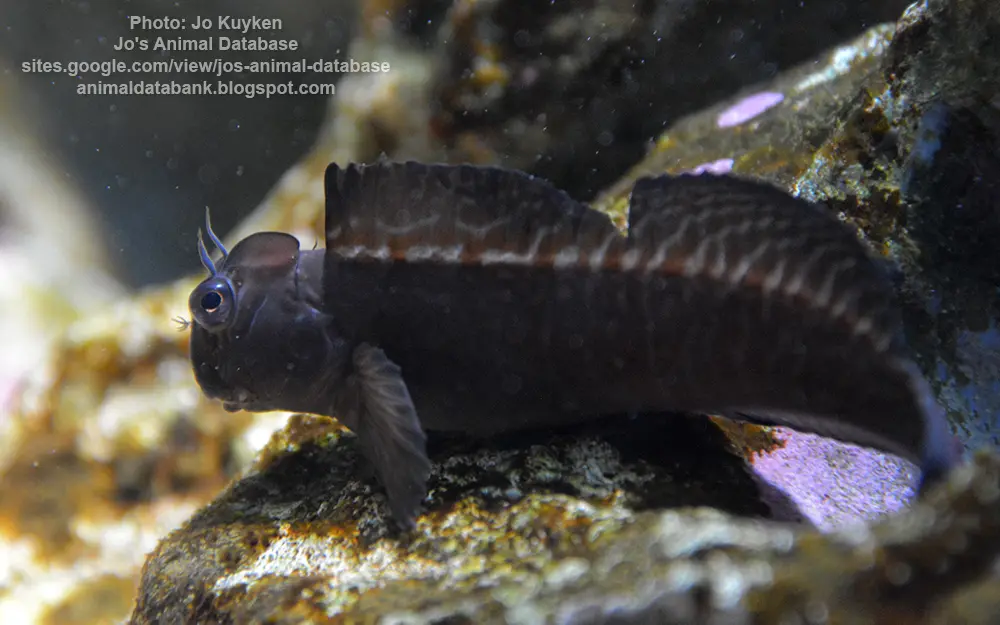Rippled rockskipper (Istiblennius edentulus)Follow

General data
- Main name: Rippled rockskipper
- Local names: Rippled blenny, Smooth-lipped blenny, Toothless blenny, Coral blenny
- Climates: Tropical
- Habitat: Saltwater
- Native: Africa, Asia, Australia & Oceania
- Distribution: Pacific Ocean, Indian ocean, Red sea
Classification
- Genus: Istiblennius - Sailfin blennies
- Family: Blenniidae - Combtooth blennies
- Order: Blenniiformes - Blennies
- Class: Teleostei - Ray-finned fishes
- Superclass: Osteichthyes - Bony fishes
Description
Indo-Pacific: Red Sea and East Africa to the Line, Marquesan, and Tuamoto islands, north to southern Japan, south to Lord Howe and Rapa. Max length: 16 cm TL Dorsal spines (total): 12 - 13; Dorsal soft rays (total): 19-21; Anal spines: 2; Anal soft rays: 21 - 23. Males darkly dusky with 5-6 pairs of bands on body and pale stripes on dorsal fin; develop a crest. Females paler in color, bands broken into spots posteriorly, dorsal fin spotted. Facultative air-breathing; Intertidal. Adults are common in areas with large rubble pieces which are often used to built breakwaters or to support jetty-pylons. They hide in cracks or holes when not feeding. They jump out of the water in energetic skippings to another pool when pursued. May remain out of water under rocks or seaweeds. They breathe air when out of water. Feeds on filamentous algae.


